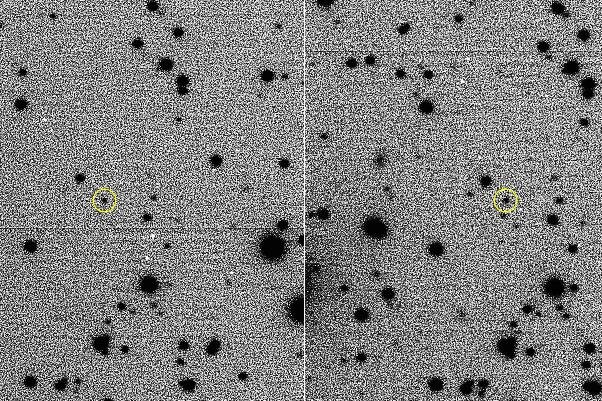The asteroid 2015 BZ509, circled in yellow, shares Jupiter's orbit but moves around the sun in the opposite direction. Photo by C. Veillet/Large Binocular Telescope Observatory
May 21 (UPI) -- A newly discovered asteroid is the only permanent, foreign-born member of the solar system -- the first known interstellar expat.
Last year, astronomers detailed the first known interstellar visitor, Oumuamua. The tumbling space rock was only passing through. Asteroid 2015 BZ509, however, lives here full-time.
As the only foreign-born space rock, 2015 BZ509 strands out. The asteroid orbits the sun in the opposite direction of most other planets, comets and asteroids -- a so-called "retrograde" orbit.
"How the asteroid came to move in this way while sharing Jupiter's orbit has until now been a mystery," lead researcher Fathi Namouni said in a news release. "If 2015 BZ509 were a native of our system, it should have had the same original direction as all of the other planets and asteroids, inherited from the cloud of gas and dust that formed them."
When scientists used simulations to trace the history of 2015 BZ509 and its trajectory back to the origins of the solar system, they found the space rock has always moved in the same direction, suggesting it was captured from a foreign star system.
Astronomers published their findings this week in the journal Monthly Notices of the Royal Astronomical Society.
"Asteroid immigration from other star systems occurs because the sun initially formed in a tightly-packed star cluster, where every star had its own system of planets and asteroids," astronomer Helena Morais said.
The gravitational pull of the newborn planets circling our sun was apparently enough to pull away an asteroid from a nearby star system.
Scientists believe additional research into the history of 2015 BZ509 will offer new insights into the nature of the stellar nursery from which the sun originates. The expat's origins could also help scientists better understand how the ingredients necessary for life on Earth might have ended up inside our solar system.















